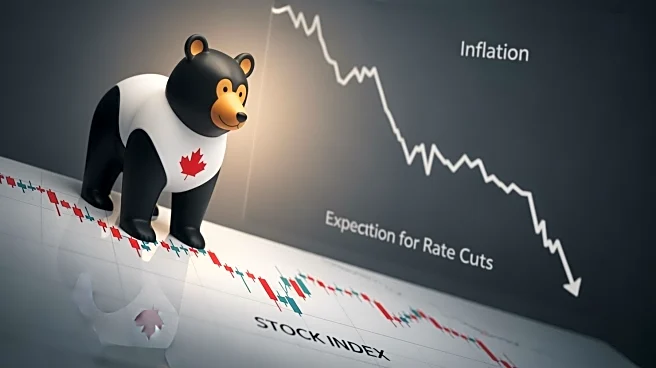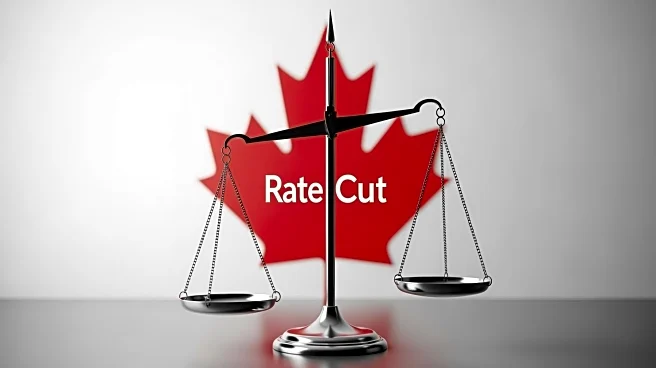What's Happening?
Canada's main stock index, the S&P/TSX composite index, opened lower on Tuesday, driven by a decline in the materials sector. This downturn followed the release of hotter-than-expected inflation figures, which led investors to reassess their expectations
for an interest rate cut by the Bank of Canada. At 9:30 a.m. ET, the index was down 1.2% at 30,070.35 points. The inflation data has tempered the previously anticipated rate cut, as investors adjust their strategies in response to the new economic indicators.
Why It's Important?
The reaction of the Canadian stock market to the inflation data underscores the sensitivity of financial markets to economic indicators and central bank policies. The potential delay or alteration in the Bank of Canada's interest rate decisions could have significant implications for investors and businesses. A rate cut is generally seen as a measure to stimulate economic activity, but higher-than-expected inflation may prompt the central bank to reconsider its approach. This situation highlights the challenges central banks face in balancing inflation control with economic growth objectives.
What's Next?
As investors digest the latest inflation data, attention will turn to the Bank of Canada's upcoming meeting, where interest rate decisions will be closely watched. Market participants will be looking for signals from the central bank regarding its policy direction in light of the new economic data. The outcome of this meeting could influence market sentiment and investment strategies, as stakeholders adjust to the evolving economic landscape.
Beyond the Headlines
The interplay between inflation data and interest rate expectations in Canada may also have broader implications for global financial markets. As central banks worldwide navigate similar challenges, the decisions made by the Bank of Canada could offer insights into how other economies might respond to inflationary pressures. Additionally, the impact on cross-border trade and investment flows between Canada and the U.S. could be significant, given the interconnected nature of the two economies.














